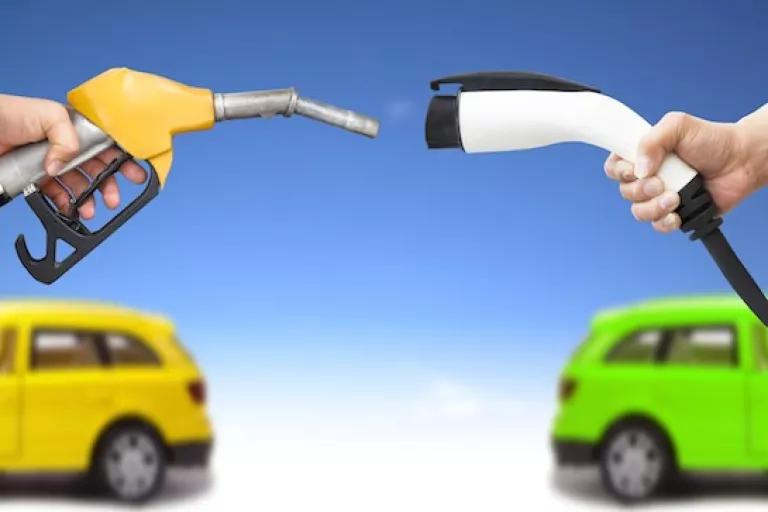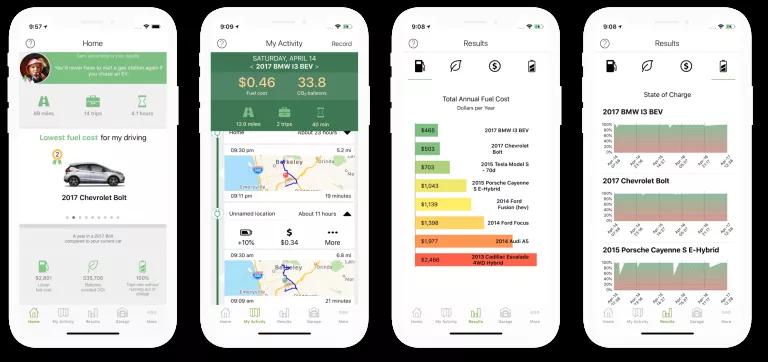
If you’re thinking of buying a new car, there’s a good chance you’re considering trying something greener. As a novice car buyer I wanted to see what tools and information were easily accessible to make an informed choice when purchasing a new vehicle.
The first person I thought to ask about car buying decisions was my father, an avid car lover and proud Luddite. He recommended I buy a paper print of AutoTrader to get an impartial review of all vehicles on the market. It turned out that they hadn’t had a physical print in nearly 5 years!
The good news is that the car buying experience is rapidly changing to become more digital. AutoTrader now has an online presence as well as a smart phone app. In fact, there are a lot of apps and online tools on the market. But if you’re in the market for an electric vehicle, you’ll need additional resources.
EVs are plainly different. They currently receive subsidies and rebates (sometimes more than one), have lower maintenance costs, lower fuel costs, better fuel economy and, of course, they have lower tailpipe emissions. There are also additional matters such as when and where to charge the car, and, accordingly, if the car can meet your particular driving needs.
The existing tools such as Cars.com and Edmunds typically fail to include any information about rebates, total cost of ownership, charging options, fuel economy and emissions.
Luckily, tools are changing.

Online calculators, such as ZappyRide and the BeFrugal calculator, use information such as average daily travel, weekend travel, if the car would be used for long road trips and the buyer’s location, to determine the best set of electric vehicle options. Implicit to this selection are estimates of the cost of ownership, including federal and state rebate programs.
The tools are not perfect, however. For example, they summarily rejected me as a prospective EV owner because I plan to use a car only for long road trips. Turns out I recently completed a 600-mile road trip with a Chevy Spark rental (which has an 80-mile range). I knew the availability of charging stations is growing and planned accordingly. I had had no issues on my trip, although, to be fair, it was in California, which has many more charging options than my home state of New York. I would have preferred if the tools had considered available fast-charging infrastructure and asked if I would be OK with stopping mid-trip for 30 minutes to recharge and stretch my legs (I am).
They also overlook customers who would otherwise not consider an electric vehicle, and they do not have any information about other low-emission vehicles such as hybrid vehicles.
So where can buyers find such information?
Enter the U.S. Department of Energy

The Department of Energy (DOE) has developed an Alternative Fuel Data Center Vehicle Cost Calculator. This tool uses basic information about your driving habits, much like the online calculators above, to estimate total cost of ownership and accordingly recommend vehicle models. Going beyond, however, the DOE tool estimates emissions for makes and models of most vehicles, including engines that run on gasoline or alternative fuels.
Progress for sure. But it is still using “estimated” driving habits, does not take into account available charging infrastructure or maintenance costs, and leaves the buyer on their own to locate a dealer.
Thankfully, there is a new app on the market: MyGreenCar. Developed at the Lawrence Berkeley National Lab, MyGreenCar covers the entire car-buying experience. MyGreenCar is currently supported by GreenLightLabs Inc. and is available in both the Google and Apple online app stores. So far this is the only tool that uses a car buyer’s actual driving data to calculate a customized cost of ownership. The first step is installing the app and identifying a few types of preferred vehicles. Then, the user continues driving as normal (in any car) while the app runs in the background collecting driving data. Then, based on driving needs and routes, juxtaposed with physics-based modeling of car performance, it provides an emissions and cost analysis of each selected vehicle to suggest the best and greenest ones for that driver. If the user had not selected any EVs or hybrids to compare, the app would include a few of those options, too, for comparison. This opens the door for potential EV owners who may not have otherwise considered a low-emission vehicle. Range anxiety or concerns are addressed by using personal driving behavior such as routes and distances, common parking places and times, to be sure that there is both charging infrastructure and battery range for the driver to make it to all their destinations without the EV running out of juice.

And to top it off, once you have chosen your final preferred car, the app directs you to the nearest dealer.
While there is always room for improvement, this app works great for me. It covers the entire buying experience and includes much of the information I would need to make the most sustainable and economic personal choice.
I’ve tested the tools, let the search begin!